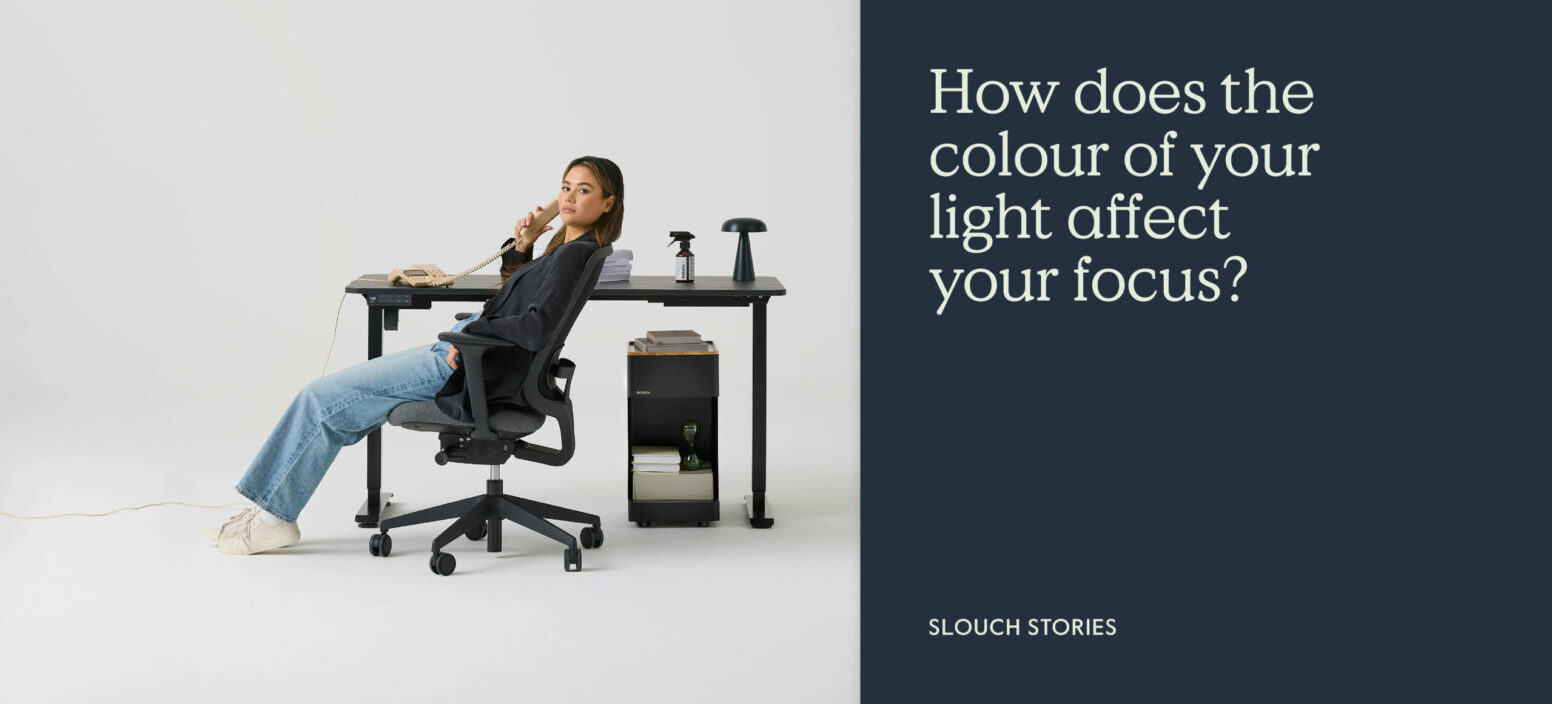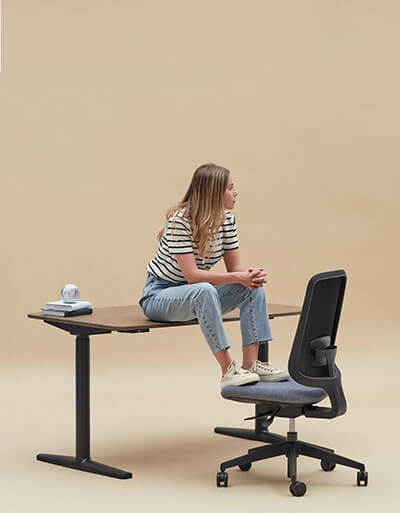The office furniture experts at Slouch are weighing in on the much-debated topic of which colour light is best for studying. We’ll explore the ins and outs of whether using an out-of-the-ordinary light colour can give you extraordinary results.
Opting for a truly comfortable and supportive ergonomic office chair is a significant part of setting up your workstation for studying. But it’s not the only thing you can do to optimise your environment. Have you ever pondered what the best colour light for studying is? Well keep reading and we’ll let you in on exactly which colours are your best friends for focus.
The science behind light colours
We know you’re probably keen to get into the nitty-gritty of the best colour light for studying. However, in order to do that it’s important we quickly touch on light colour temperature, otherwise known as Kelvins.
You see, your brain responds differently to different colour temperatures and you can use this to help with your focus.
Here’s a quick breakdown of the main types:
- Warm white (2700 – 3000K) – Gives a cosy, relaxing atmosphere
- Cool white (4000 – 5000K) – Good for general working
- Daylight (5000 – 6500K) – Best for concentration and detailed tasks
Which colours of lighting are best for studying?
What is the best colour of lighting for studying late into the wee hours isn’t the same as the best colour for a mid-morning study session. That’s why our top picks are for both day and evening.
Daytime studying
When it comes to daytime study sessions, natural daylight is your best option because it keeps you alert and helps maintain your natural body clock. So move your desk in front of a window if it isn’t already.
But what if you can’t access natural light? That’s where those higher Kelvin ratings come in handy. Aim for cool white or daylight bulbs (5000 – 6500K) as they keep you energised.
Evening studying
As the day winds down, you’ll need a different approach. While it might seem logical to keep bright, cool lights to stay alert, this can actually mess with your sleep patterns. So avoid it if at all possible.
Instead, we suggest that you switch to warmer lights (3000 – 4000K) and gradually reduce overall brightness.
You’ll also want to reduce blue light from your monitor if at all possible and maintain a safe distance from the monitor to your eyes.
Natural vs Artificial Light
Natural daylight is the gold standard for studying. However, we can’t always rely on it. Sometimes because of the British weather not providing enough in the daytime, and other times because a lot of studying is done in the evening.
Position yourself near a window if you have one in the room you study in to to take advantage of your natural light source as well as being in harmony with feng shui desk principles.
As the natural light fades, gradually increase your artificial lighting while switching to warmer tones to maintain comfortable visibility without disrupting your sleep patterns or straining your eyes.
Alternatives to white light
White light in its various temperatures is most common because it’s closest to natural light and gives the best visibility. However, you might want to experiment with other colours to find the best colour light for studying for you. Here’s how other common light colours typically affect people.
Yellow light
Yellow lighting strikes a nice balance for many people. It’s less harsh than pure white light while still providing good visibility, though some find it makes them feel a bit sleepy. You might want to consider it if you find white light too intense.
Blue light
Blue light is incredibly effective at boosting alertness and improving cognitive performance, making it perfect for morning study sessions. However, this stimulating effect becomes problematic in the evening because it suppresses melatonin – your body’s natural sleep hormone.
If you’re ever in a real deadline bind you might want to turn to it as a one off, but we wouldn’t recommend it regularly as you risk throwing off your circadian rhythm.
Red light
If you’re studying late into the evening, red light could be your secret weapon. It’s the least disruptive to your natural sleep cycle and creates a calm environment. The downside is it might not provide enough visibility for detailed work like reading small print or working with numbers.
Green light
Do you ever find yourself getting anxious while studying? Green light could help. While less commonly used, green light has been shown to have a calming effect while still maintaining good visibility. However, it’s not as effective as blue or white light for maintaining alertness.
Creating layers of light
Getting your study lighting right isn’t as simple as picking one perfect light source. The best setups combine different types of lighting to create a flexible environment that works throughout the day. Here are the different types you can layer together.
Ambient lighting
This is your room’s base lighting which usually comes from ceiling lights or natural light through windows. It provides overall illumination but ideally shouldn’t be your only light source for studying.
Task lighting
This is exactly what you think it is from the name – lighting that helps you achieve focused task work, like a desk lamp. Make sure it’s adjustable so you can direct light exactly where you need it.
Accent lighting
Accent lighting isn’t really essential for studying and tends to exist mainly for ambience. However, it can get rid of harsh shadows and give the room good balance.
Study setup tips
Creating the perfect study environment isn’t all about lighting. Here are some other ways you can optimise your workstation to keep you focused.
- Keep your screen at arm’s length and slightly below eye level. Match your screen brightness to your room lighting – if you’re squinting at your screen or it’s glaringly bright it needs adjusting.
- Make sure you have all of your home office essentials to hand so that you don’t have to get up and leave your study space
- Wondering what the best music to listen to while studying is? We’ve come up with a comprehensive list for you to enhance your focus.
Your dream study space is here
Our ergonomic office chairs and home working desks are designed to keep you properly supported during those long study sessions, helping you maintain focus when it matters most.
Need advice on creating your ideal study setup? Our friendly team is always happy to help. Get in touch at [email protected] or browse our range of office chairs designed for comfort and productivity.
Additional reading:

